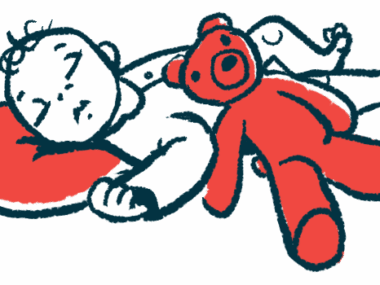5 Rare Types of Spinal Muscular Atrophy
Written by |

Spinal muscular atrophy (SMA) is a genetic disease that causes muscle weakness. According to Spinal Muscular Support UK, there are various forms of the disease that affect different parts of the body and vary in severity.
We’ve put together a list of some of the rarer forms of the disease:
Distal Hereditary Motor Neuropathy Type V
According to the NIH, this form of SMA usually begins in adolescence and primarily affects the nerves in the spinal cord. It leads to muscle weakness and movement problems in the hands and feet. The disease is not life-threatening but may affect gait, along with muscle atrophy in the hands, and foot problems such as high arches.
MORE: The three main symptoms of SMA
Spinal and Bulbar Muscular Atrophy
Also referred to as Kennedy disease, this form of SMA generally affects adult males. Symptoms include muscle atrophy in the arms and legs, which often leads to walking and balance difficulties. Throat and facial muscles can also be affected which can lead to difficulties speaking, swallowing and breathing. In some cases, males may develop breast tissue and become infertile, according to the NIH.
MORE: How SMA is diagnosed
SMA With Lower Extremity Dominance
Often occurring in early childhood SMA-LED affects the leg muscles, particularly the thighs. According to diseaseinfosearch.com, as the condition progresses, children will have difficulty walking, standing up from a seated position and climbing stairs.
MORE: From idea to injection, how Spinraza came to be.
SMA With Progressive Myoclonic Epilepsy
SMA-PME is the typical muscle wastage associated with SMA with a combination of muscle jerking and seizures. Typically starting in early childhood, as the disease progresses, it will cause problems with walking and eventually, swallowing and breathing. The seizures tend to begin a few years after muscle atrophy has begun. According to the NIH, the prognosis for children with SMA-PME is poor with many living only until late childhood or early adulthood.
MORE: 11 fast facts about SMA
X-Linked Infantile SMA
XL-SMA appears in infancy, often visible at birth and characteristics of the disease include muscle wastage and breathing difficulties. Contractures (joint deformities) are common and in severe cases, babies can be born with broken bones. According to diseaseinfosearch.com, the condition mainly affects boys as it’s inherited through the X-chromosome.
MORE: Five treatments to help manage SMA
SMA News Today is strictly a news and information website about the disease. It does not provide medical advice, diagnosis or treatment. This content is not intended to be a substitute for professional medical advice, diagnosis, or treatment. Always seek the advice of your physician or another qualified health provider with any questions you may have regarding a medical condition. Never disregard professional medical advice or delay in seeking it because of something you have read on this website.






